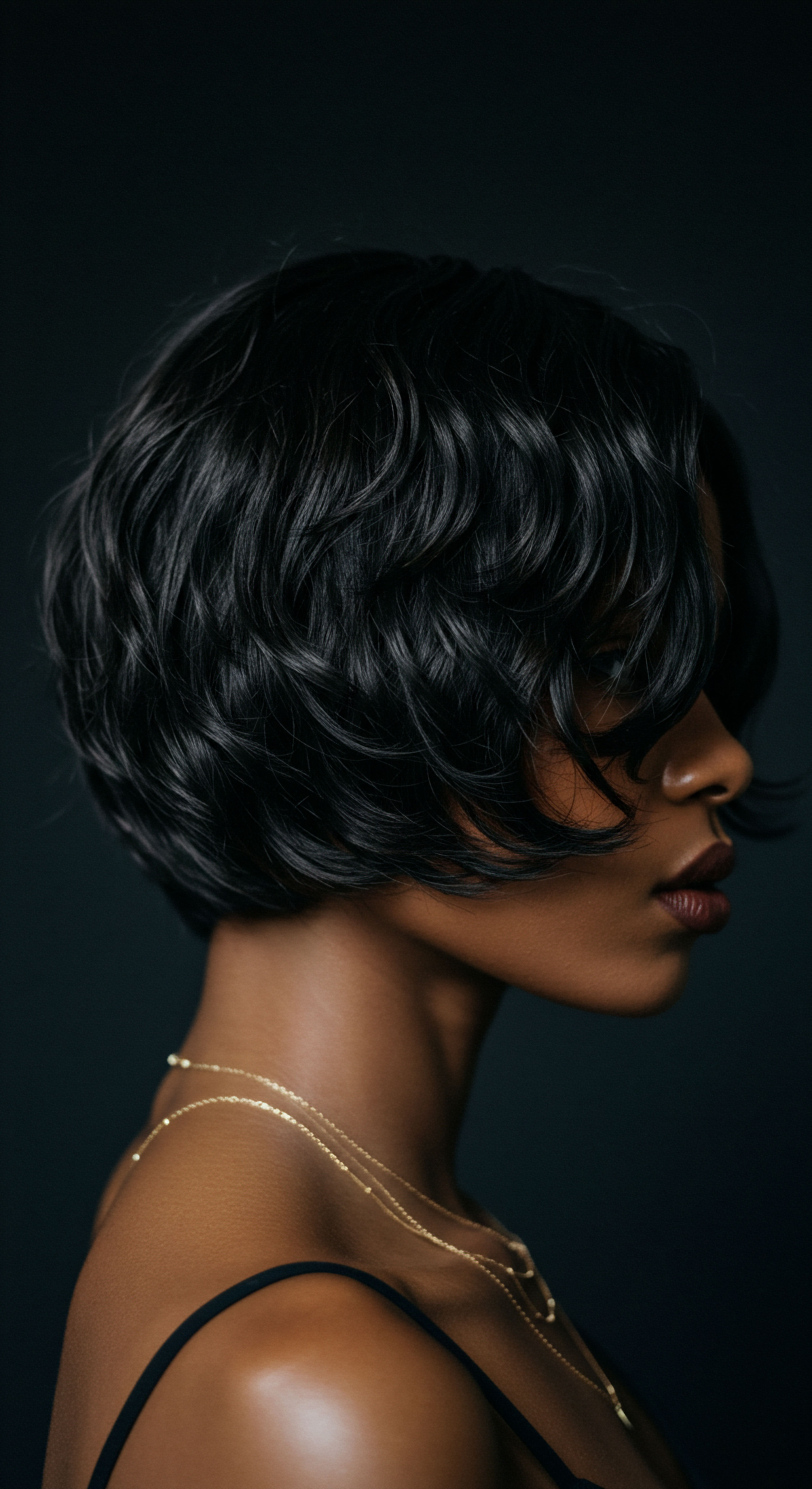
Fundamentals
Imagine a delicate bloom, each petal uniquely curled, each strand a testament to its singular heritage. Now, consider a world where the very nature of that bloom is subtly, or overtly, deemed less than ideal, simply because its inherent structure diverges from a narrow, prescribed vision of beauty. This quiet, often unseen, phenomenon is what we come to know as Afro-Textured Bias.
It is a prevailing inclination, an unspoken preference that subtly, yet significantly, favors hair textures and styles aligning with Eurocentric aesthetics, often to the detriment of coily, kinky, and wavy hair patterns so often celebrated within Black and mixed-heritage communities. This bias is more than a fleeting judgment; it signifies a deep-seated devaluation of hair that naturally springs from the scalp in intricate coils and voluminous forms.
The basic Explanation of Afro-Textured Bias reveals it as a societal predisposition. It is a collective lean towards hair that lies flat, flows straight, or forms loose, predictable waves, creating an environment where the magnificent diversity of Afro-textured hair is frequently misunderstood or, worse, dismissed. This pervasive attitude often translates into tangible disadvantages, affecting how individuals with textured hair are perceived in educational settings, professional spaces, and even within the broader cultural discourse. Its meaning extends beyond mere aesthetics; it touches upon identity, self-worth, and the right to authentic self-expression.
Afro-Textured Bias manifests as a societal preference for Eurocentric hair aesthetics, quietly diminishing the inherent beauty and cultural significance of coily, kinky, and wavy hair.

Unpacking the Initial Perceptions
At its simplest, this bias shapes our initial perceptions. When someone with flowing, straight hair is automatically deemed “neat” or “professional,” while a person with a perfectly styled afro or meticulously crafted locs faces questions about their suitability, we witness Afro-Textured Bias in action. It is a subtle current that steers judgment, often unconsciously, away from the natural inclinations of textured hair. The societal narrative has, for too long, elevated one form of beauty while marginalizing another, creating a disparity in how hair is seen and valued.
The historical roots of this bias run deep, intertwining with colonial legacies and the imposition of Western beauty standards. For centuries, the natural state of Black hair was associated with notions of wildness or unruliness, starkly contrasting with the cultivated ideal of straight hair. This historical conditioning continues to influence contemporary perceptions, even if subliminally. Understanding this initial layer of meaning helps us recognize that the bias is rarely an individual failing, but rather a systemic imprint upon our collective consciousness.
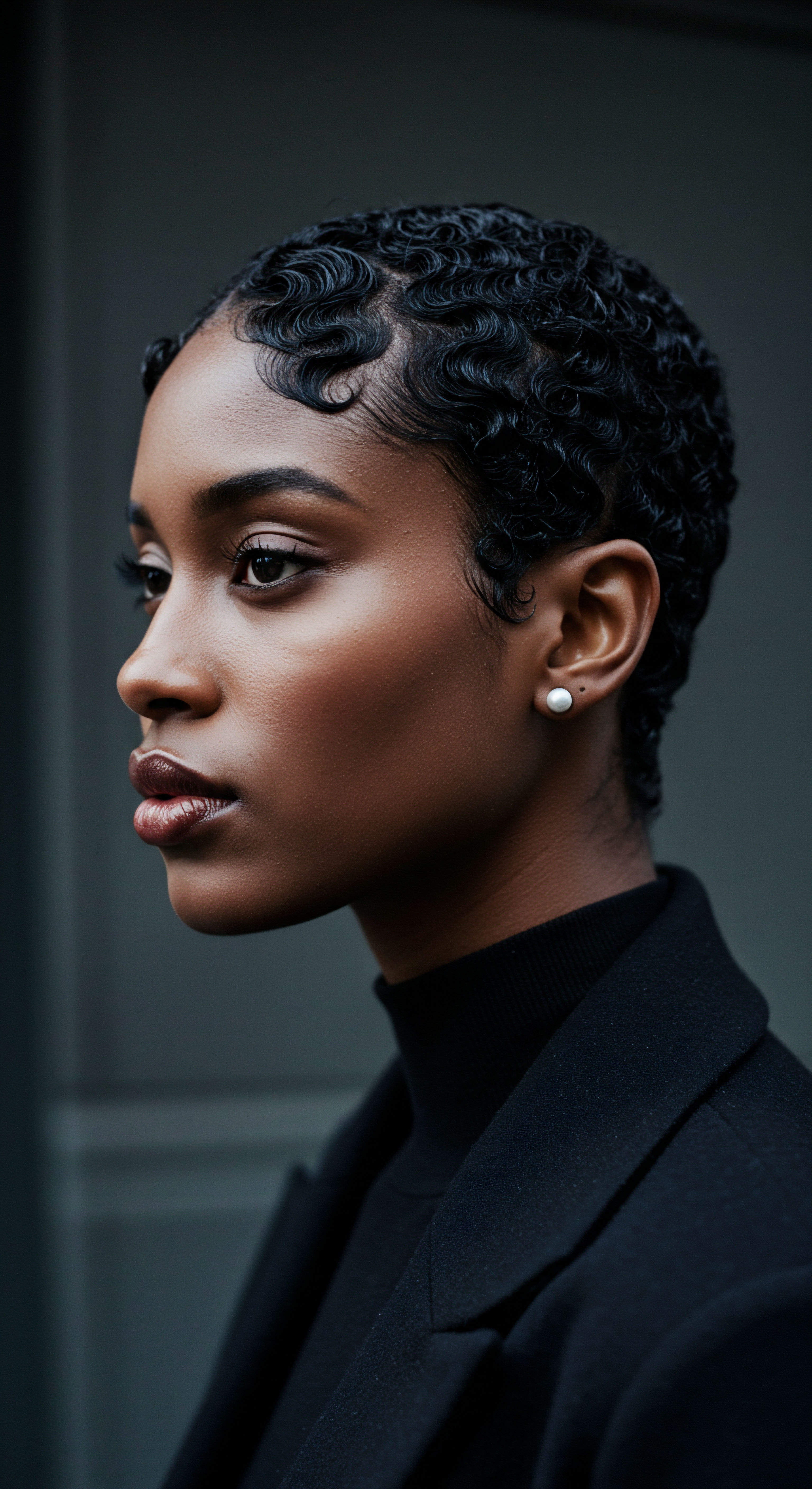
Early Manifestations in Hair Care
For those beginning their journey with textured hair care, the presence of Afro-Textured Bias can feel like an invisible hurdle. Products marketed for “all hair types” often cater predominantly to straight or loosely wavy hair, leaving individuals with tighter curls searching for solutions that truly address their unique needs. This limited market representation is a direct consequence of a bias that historically deemed textured hair a niche, rather than a prominent, beautiful reality.
- Product Availability ❉ The relative scarcity of specialized tools and formulations for coily and kinky hair in mainstream retail spaces reflects a market shaped by prevailing biases.
- Styling Norms ❉ Pressure to chemically straighten or “tame” textured hair for perceived acceptability, particularly in formal environments, illustrates the pervasive influence of this bias.
- Educational Gaps ❉ Many hair professionals receive limited training in the intricacies of Afro-textured hair, a direct outcome of a system that historically marginalized its study and appreciation.
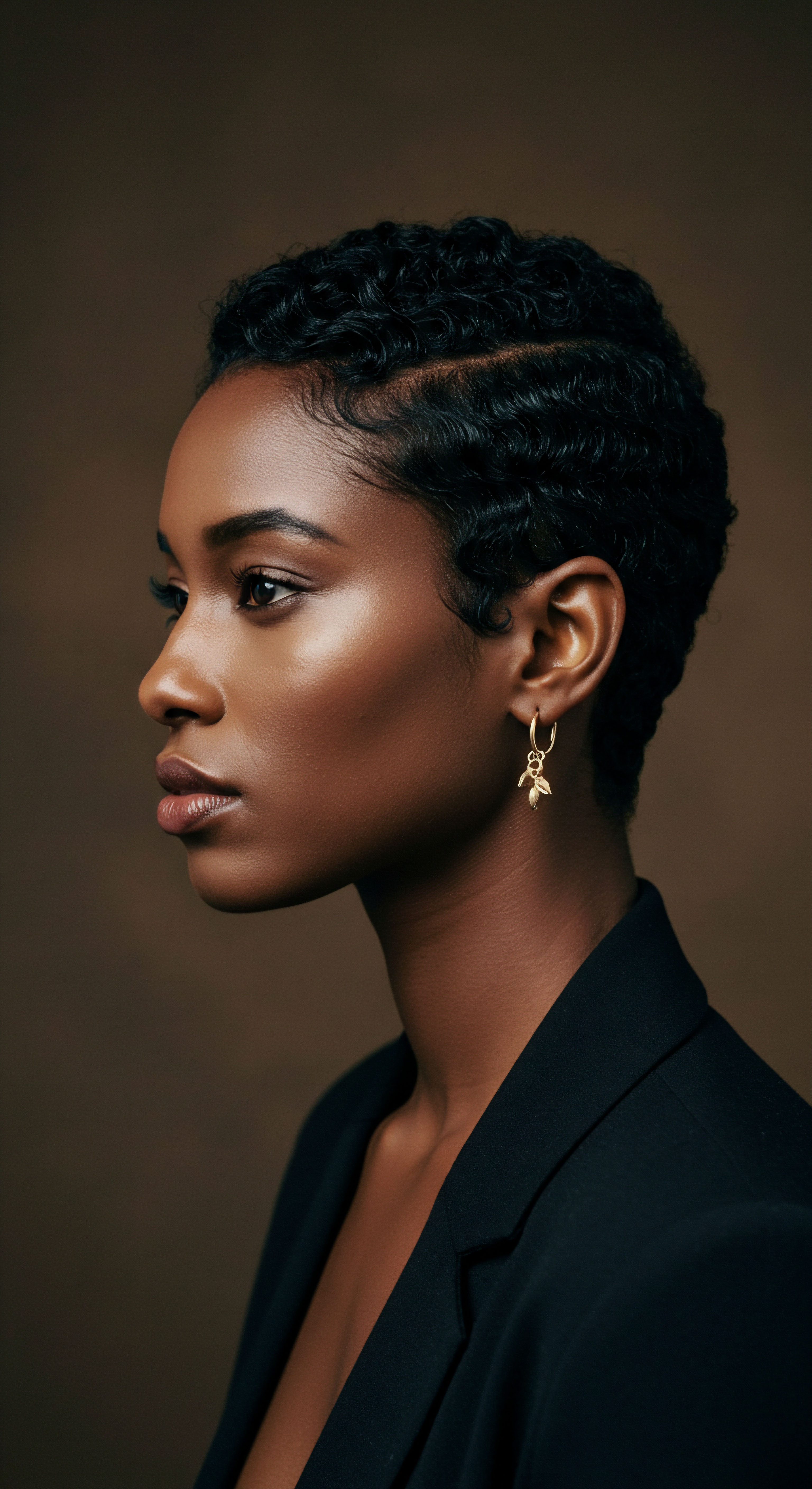
Intermediate
Moving beyond the foundational understanding, the Interpretation of Afro-Textured Bias at an intermediate level delves into its more pervasive and insidious practical applications within daily life and broader societal structures. Here, the bias ceases to be a mere preference and transforms into a tangible force that shapes opportunities, influences self-perception, and dictates the unspoken rules of belonging. It is a systemic inclination that dictates how individuals with textured hair navigate spaces from schoolyards to corporate boardrooms, often requiring them to adapt or conform to standards not designed for their inherent hair structure.
The Description of this bias at this stage becomes more nuanced, revealing its subtle operations. It is evident in the quiet assumptions made about an individual’s “professionalism” based solely on their hair’s texture or chosen protective style. Consider a young person with vibrant box braids or meticulously sculpted locs who is told their hairstyle is a “distraction” in an academic setting.
This isn’t merely a personal opinion; it reflects a deeply ingrained bias that deems certain expressions of Afro-textured hair as inherently less appropriate or less serious than their straighter counterparts. The impact of such judgments extends beyond the superficial, influencing academic trajectories and early career perceptions.
Afro-Textured Bias, at an intermediate level, acts as a subtle yet powerful arbiter of societal acceptance, dictating how natural hair is perceived in realms of professionalism and education.

Cultural Contexts and Daily Rituals
Within the rich tapestry of Black and mixed-heritage cultures, hair care rituals are often deeply personal, communal, and steeped in tradition. They are acts of self-care, connection, and identity affirmation. Afro-Textured Bias, however, can cast a shadow over these cherished practices. The constant societal pressure to straighten or alter natural hair can lead to internal conflict, where the desire to honor one’s heritage clashes with the perceived necessity of conforming to external standards for social or economic advancement.
The Significance of this bias becomes particularly apparent when examining the choices individuals feel compelled to make about their hair. Many report spending considerable time and resources on processes designed to temporarily or permanently alter their hair’s natural texture, often at significant personal cost, both financial and physical. This often stems from a desire to mitigate the negative consequences of the bias rather than an authentic preference for a different hair presentation. The societal landscape, subtly shaped by this bias, implicitly rewards conformity and often penalizes authenticity.
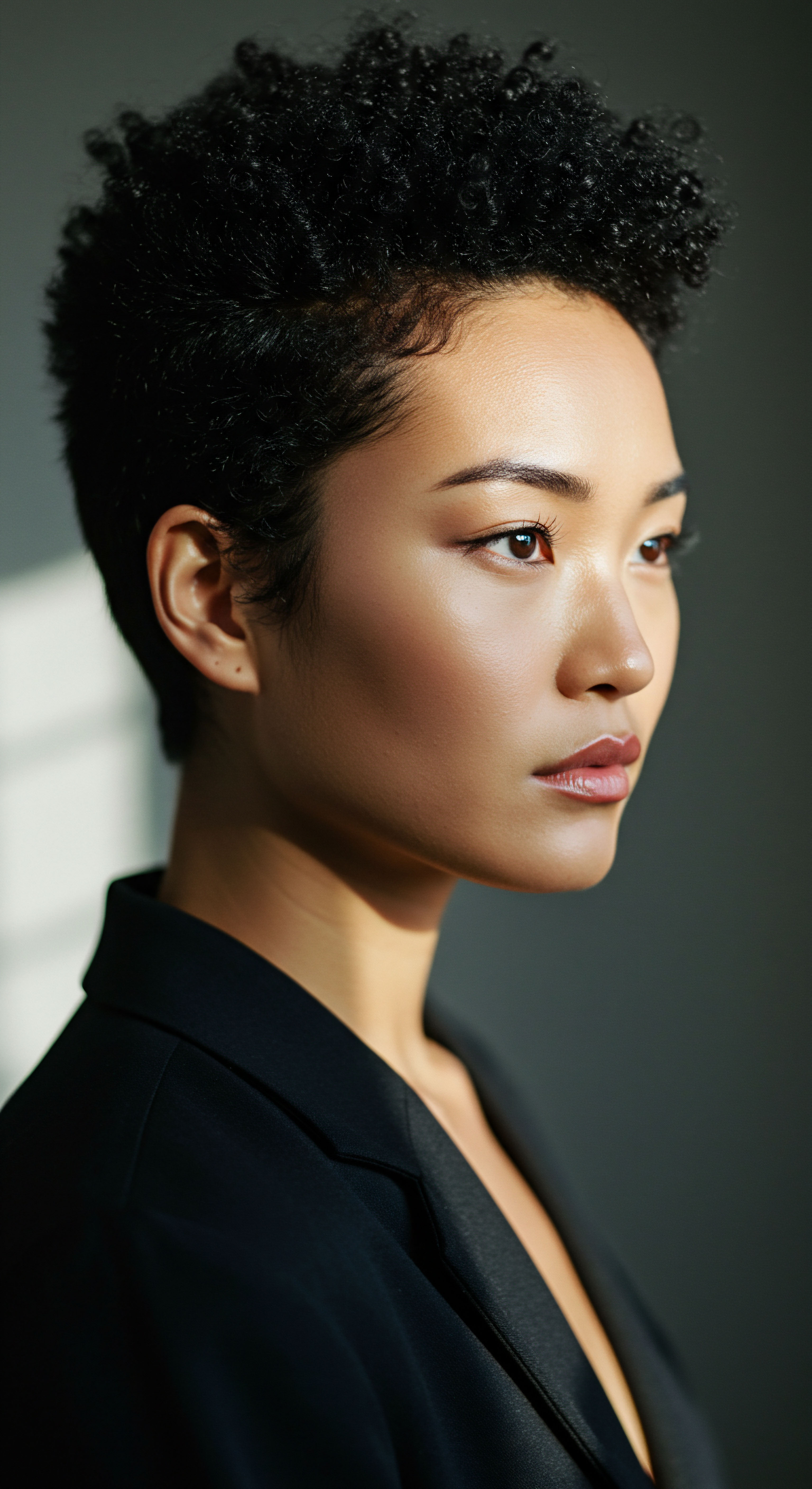
Workplace and Educational Manifestations
In professional environments, the subtle whispers of Afro-Textured Bias can become deafening. Hiring managers, consciously or unconsciously, may rate candidates with natural Afro-textured styles as less “polished” or “competent.” This often occurs even when their qualifications are identical to those with straighter hair. Similarly, in educational institutions, grooming policies, ostensibly neutral, often disproportionately affect students with textured hair, leading to disciplinary actions or missed learning opportunities.
The phenomenon creates a tangible barrier to equitable participation. When policies define “professional” or “neat” hair in ways that exclude or marginalize natural Afro-textured styles, they perpetuate a system where a person’s inherent physical characteristics become a hurdle to their advancement. This is a subtle, yet powerful, mechanism of systemic disadvantage, forcing individuals to choose between their authentic selves and perceived success.
| Area of Impact Professional Settings |
| Manifestation of Bias Unspoken grooming codes favoring straight hair. |
| Consequence for Textured Hair Limited job interviews, slower career progression, pressure to chemically straighten hair. |
| Area of Impact Educational Institutions |
| Manifestation of Bias Dress codes penalizing natural styles like locs or braids. |
| Consequence for Textured Hair Suspensions, missed classroom time, impact on self-esteem. |
| Area of Impact Media Representation |
| Manifestation of Bias Underrepresentation or negative portrayal of Afro-textured hair. |
| Consequence for Textured Hair Reinforced beauty standards, internalized self-doubt, limited positive role models. |
| Area of Impact Product Development |
| Manifestation of Bias Market saturation of products for straight hair; scarcity for textured hair. |
| Consequence for Textured Hair Difficulty finding effective care, feeling overlooked by the beauty industry. |
| Area of Impact This table highlights key areas where the bias actively shapes experiences for individuals with Afro-textured hair. |

Advanced
At its most sophisticated level, the Meaning of Afro-Textured Bias transcends simple discrimination, revealing itself as a deeply entrenched socio-cultural construct with far-reaching implications for identity, economics, and even public health within the textured hair community. It is a complex interplay of historical subjugation, aesthetic policing, and systemic exclusion, manifesting not merely as individual prejudice, but as an institutionalized mechanism that subtly dictates value and opportunity. The Clarification of this bias demands an understanding of its multifaceted nature, recognizing how it operates on psychological, economic, and legislative fronts, often subtly eroding the autonomy and well-being of those with Afro-textured hair.
This advanced Explanation considers Afro-Textured Bias as a pervasive societal current, one that has historically positioned hair textures inherent to Black and mixed-heritage individuals as outside a narrow, Eurocentric standard of acceptability. It’s a systemic inclination, often subconscious, that influences everything from beauty ideals propagated by media to the very design of professional and educational environments. The core of this bias lies in the historical power dynamics that linked straight hair to notions of “civilization” and “refinement,” while coily and kinky textures were relegated to stereotypes of “unruliness” or “unprofessionalism.” This enduring legacy shapes contemporary perceptions, creating a subtle, yet potent, form of aesthetic control.
Afro-Textured Bias represents a profound socio-cultural construct, subtly dictating value and opportunity by historically devaluing hair textures inherent to Black and mixed-heritage individuals.
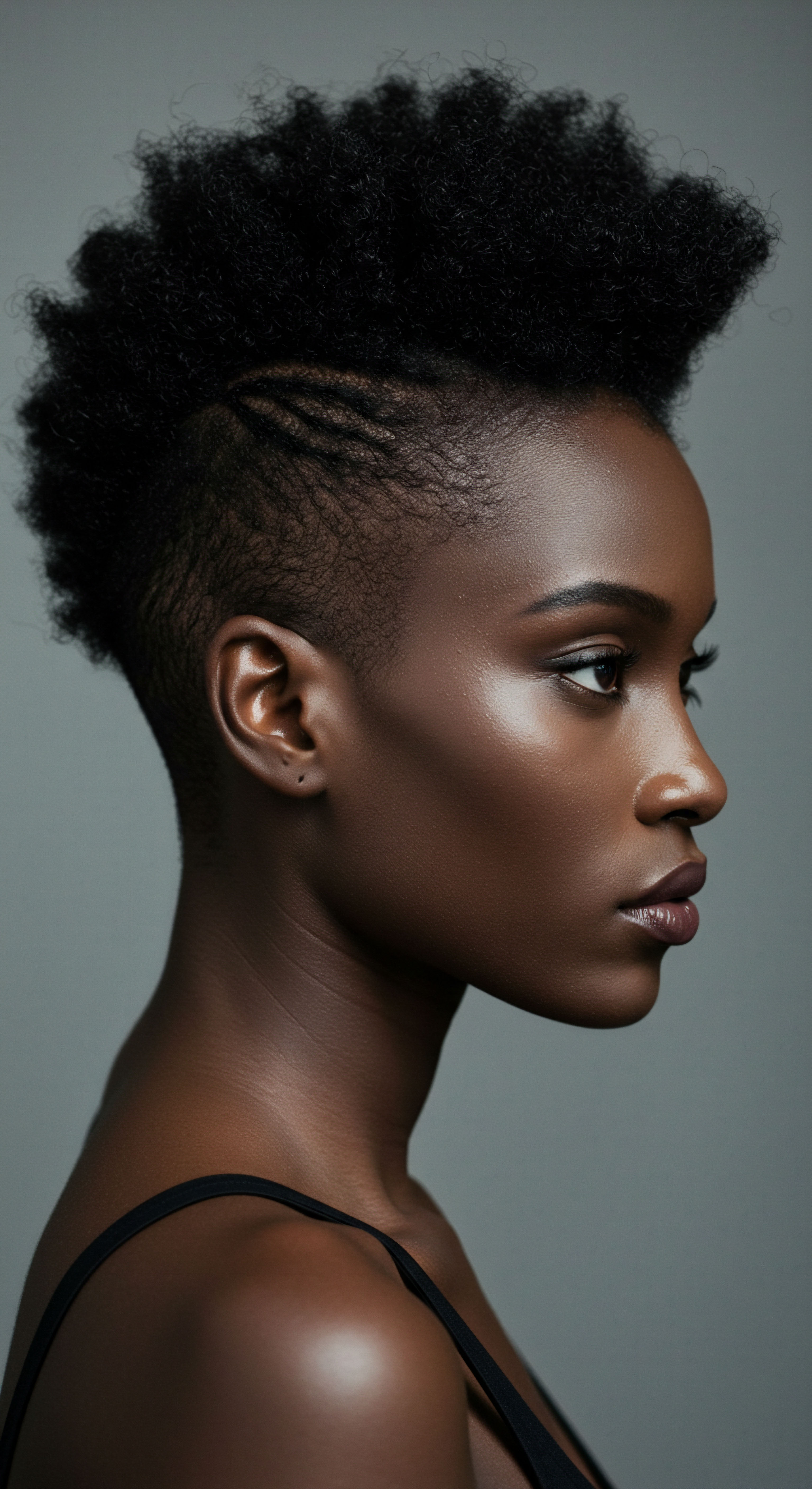
Psychological and Identity Dimensions
The profound Significance of Afro-Textured Bias lies in its capacity to impact the very core of an individual’s self-perception. When a child consistently sees their natural hair deemed “messy” or “unacceptable” in school, or when an adult faces implicit judgment in the workplace for their authentic hair expression, it can lead to internalized notions of inadequacy. This psychological burden is a heavy one, often compelling individuals to engage in practices that are not only physically damaging to their hair but also emotionally taxing, all in pursuit of a fleeting acceptance. The constant pressure to conform to an external standard can chip away at self-esteem, fostering a disconnect from one’s cultural heritage and natural beauty.
Consider the deeply personal choice of how one presents their hair. For many with Afro-textured hair, it is a declaration of heritage, a connection to ancestry, and a canvas for cultural expression. When societal bias pressures individuals to suppress this expression, it effectively silences a part of their identity.
The Delineation of this bias therefore must acknowledge the emotional toll it exacts, forcing individuals to navigate a world that often demands a performative assimilation, rather than celebrating their innate distinctiveness. This ongoing negotiation can contribute to significant stress and anxiety, impacting mental well-being in ways that are often overlooked in mainstream discussions of hair care.

The Economic and Health Intersections
Beyond the psychological, Afro-Textured Bias exerts a tangible economic force. Research has consistently demonstrated that this bias can directly influence career trajectories and earning potential. A study published in 2020 by researchers at Michigan State University and Duke University, titled “The Natural Hair Bias in Job Recruitment,” offers a compelling, albeit sobering, insight. This research found that Black women with natural hairstyles were perceived as significantly less professional and competent, and consequently, were less likely to be recommended for job interviews, even when compared to Black women who wore their hair straightened and White women with either straight or curly hair.
This particular finding highlights a subtle, yet powerful, layer of bias ❉ it suggests that the bias extends beyond a simple racial preference to a specific aesthetic preference within racial groups, compelling Black women to alter their natural hair for perceived professional gain. This data point underscores how the bias isn’t merely about direct discrimination but about the subtle, insidious ways it shapes opportunities and reinforces a narrow vision of corporate acceptability.
The economic impact extends to consumer spending. Individuals with Afro-textured hair often spend more time and money seeking out specialized products and services to care for their unique hair needs, or to achieve styles that are deemed “acceptable” in mainstream settings. This creates a dual burden ❉ facing discrimination while also bearing increased costs to mitigate its effects.
Furthermore, the historical pressure to straighten textured hair has led to widespread use of chemical relaxers, products now increasingly linked to adverse health outcomes, including certain cancers. This alarming connection reveals the bias as not merely a social issue, but a public health concern, where conformity to a biased aesthetic standard carries profound physical risks.
- Professional Gatekeeping ❉ The perception of natural Afro-textured hair as less professional can lead to fewer interview invitations and slower career progression, creating tangible economic disparities.
- Health Implications ❉ The historical reliance on chemical straighteners to conform to biased beauty standards has been linked to significant health risks, including certain types of cancer.
- Market Underservice ❉ Despite significant consumer spending power, the textured hair market has historically been underserved by mainstream brands, reflecting a systemic disregard for its unique needs.
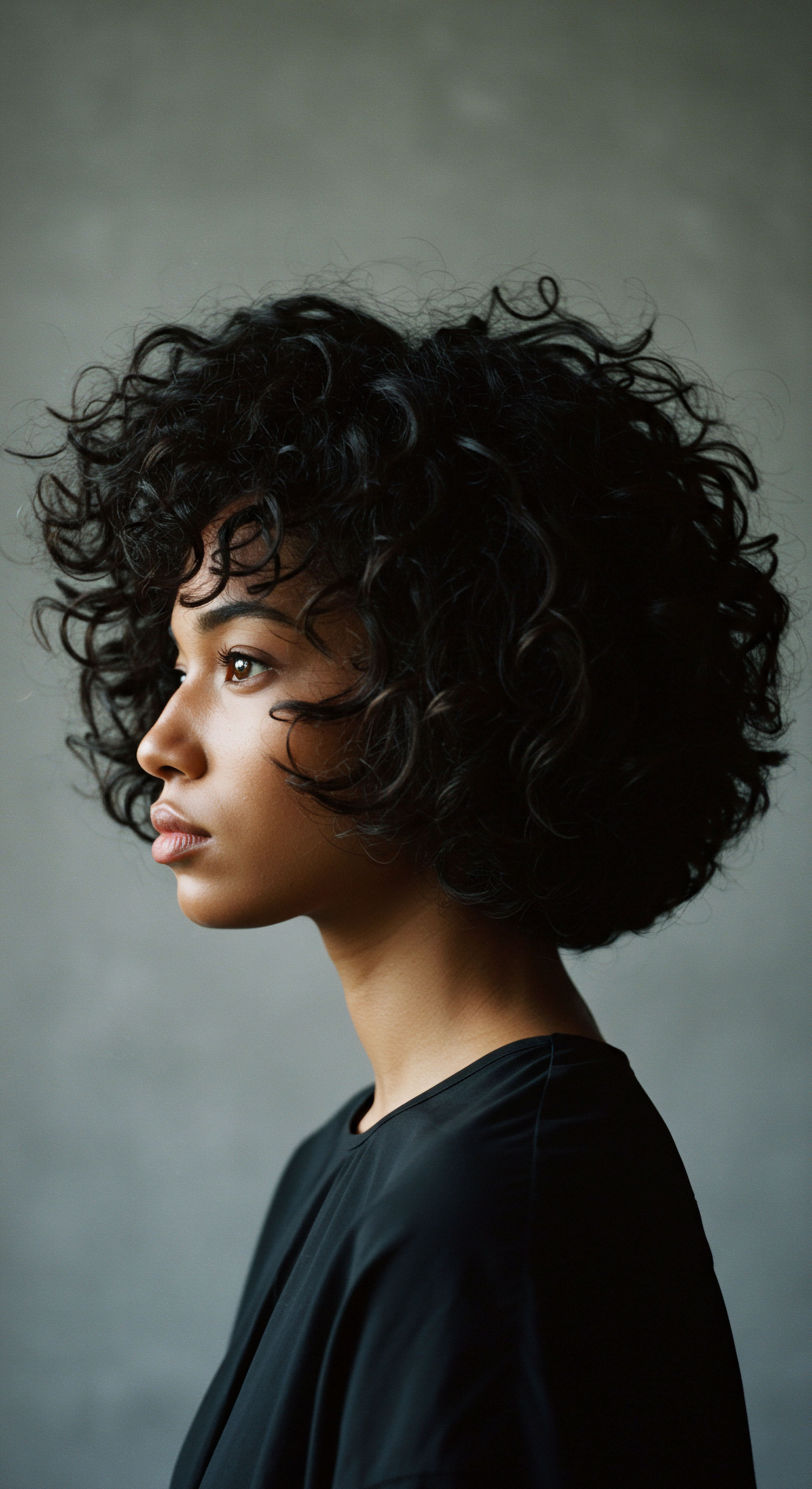
Societal Policy and Systemic Change
The response to Afro-Textured Bias has seen the rise of legislative efforts like the CROWN Act, which seeks to prohibit discrimination based on hair texture and protective styles in workplaces and schools. While these legal measures are vital steps towards systemic change, their necessity itself serves as a stark reminder of how deeply embedded this bias remains within our societal fabric. The very existence of such legislation underscores the reality that, without explicit protections, individuals with Afro-textured hair are often left vulnerable to discriminatory practices rooted in biased aesthetic norms.
The continuous Explication of Afro-Textured Bias compels us to scrutinize the subtle mechanisms by which it perpetuates itself. It thrives in unspoken expectations, in the default settings of beauty and professionalism, and in the absence of diverse representation across all sectors. Overcoming this bias requires not only legal frameworks but also a profound cultural shift—a collective re-education that celebrates the inherent beauty, resilience, and versatility of Afro-textured hair, dismantling the antiquated notions that have historically diminished its worth. This ongoing work demands a conscious effort to challenge prevailing narratives and to champion a truly inclusive vision of beauty and professionalism that honors every hair pattern.
| Hair Presentation Black Women with Natural Hair |
| Perceived Professionalism Score (Relative) Lowest |
| Likelihood of Interview Recommendation (Relative) Least Likely |
| Hair Presentation Black Women with Straightened Hair |
| Perceived Professionalism Score (Relative) Higher than Natural, Lower than White Straight |
| Likelihood of Interview Recommendation (Relative) More Likely than Natural, Less Likely than White Straight |
| Hair Presentation White Women with Straight Hair |
| Perceived Professionalism Score (Relative) Highest |
| Likelihood of Interview Recommendation (Relative) Most Likely |
| Hair Presentation White Women with Curly Hair |
| Perceived Professionalism Score (Relative) Comparable to White Straight |
| Likelihood of Interview Recommendation (Relative) Comparable to White Straight |
| Hair Presentation This table summarizes key findings from the 2020 Michigan State University and Duke University study, illustrating the significant disparity in perceptions and opportunities based on hair texture. |

Reflection
As we draw our exploration of Afro-Textured Bias to a close, a quiet sense of purpose settles. The journey through its fundamental origins, its intermediate manifestations, and its advanced, systemic operations reveals a truth ❉ hair, in its deepest sense, is never merely a collection of strands. For those with Afro-textured hair, it is a profound marker of heritage, a canvas of identity, and a testament to enduring resilience. The persistent shadow of bias reminds us that true inclusivity extends beyond surface-level acceptance; it demands a deep, unwavering respect for every curl, every coil, and every wave as a complete expression of beauty and worth.
Our collective path forward lies in nurturing a world where the rich diversity of textured hair is not just tolerated, but celebrated as an inherent part of human beauty. It involves a conscious unlearning of ingrained prejudices and an active championing of environments where authenticity is not a risk, but a given. By truly understanding the profound effects of Afro-Textured Bias, we gain the capacity to cultivate spaces where every individual feels seen, valued, and free to present their most authentic self, from the crown of their head to the tips of their toes. This is the enduring vision that guides Roothea, a vision of liberation and profound self-acceptance for all textured hair.

References
- De Leon, Michelle, and Chikwendu, Joanna. 2019. Hair Equality Report ❉ More Than Just Hair. World Afro Day.
- Koval, Christy Zhou, and Rosette, Ashleigh Shelby. 2020. “The Natural Hair Bias in Job Recruitment.” Social Psychological and Personality Science, 11(7), 990-998.
- Louis, Courtney C. Webster, Christopher T. Gloe, Lilianne M. and Moser, Jason S. 2022. “Hair me out ❉ Highlighting systematic exclusion in psychophysiological methods and recommendations to increase inclusion.” Frontiers in Human Neuroscience, 16.
- Perception Institute. 2016. The “Good Hair” Study ❉ Explicit and Implicit Attitudes Toward Black Women’s Hair.
- Whitley, Brittany, and Barnas, Jill. 2022. Racial Discrimination Based on Hair Texture/Style. MOST Policy Initiative.